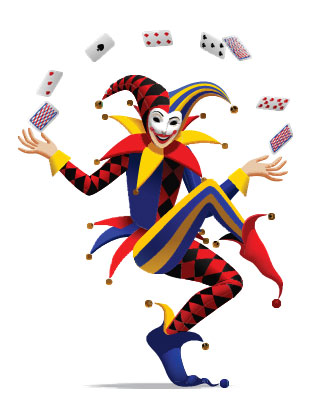The Myth of Multitasking
by Dr. Liz, November 22, 2023

 Multitasking is defined as “the ability to perform multiple tasks or activities simultaneously or in rapid
succession, often switching attention between them” (Pedersen, 2023). Multitasking requires “cognitive
flexibility” – sometimes called task switching – which is “the brain's ability to adapt to new, changing, or
unplanned events” (Miller, 2021).
Multitasking requires controlling and shifting your focus and attention,
which can be particularly challenging for people with ADHD who tend to become distracted. From a neuroscience
perspective, there is no such thing as multitasking. The brain can only do one thing at a time, so what we call
multitasking is really just fast task-switching. And it is a myth that it helps us be more productive.
Multitasking is defined as “the ability to perform multiple tasks or activities simultaneously or in rapid
succession, often switching attention between them” (Pedersen, 2023). Multitasking requires “cognitive
flexibility” – sometimes called task switching – which is “the brain's ability to adapt to new, changing, or
unplanned events” (Miller, 2021).
Multitasking requires controlling and shifting your focus and attention,
which can be particularly challenging for people with ADHD who tend to become distracted. From a neuroscience
perspective, there is no such thing as multitasking. The brain can only do one thing at a time, so what we call
multitasking is really just fast task-switching. And it is a myth that it helps us be more productive.
Face the Facts
 It is a common misconception that multitasking is an efficient way to get things done. Studies show that, for
most people, multitasking is actually less productive and more mentally draining. For example, Stanford
researchers found that people who are “regularly bombarded with several streams of electronic information cannot
pay attention, recall information, or switch from one job to another as well as those who complete one task at
a time” (Bradberry, 2014).
In 2001, Meyer, Evans and Rubinstein found that people who multitask make more
mistakes and perform tasks more slowly, which “can cost as much as 40 percent of someone's productive time.”
This is because when we multitask, the cognitive resources available to each task are reduced. In other words,
your brain needs to switch back and forth from one task to the other, giving each task a piece of your
processing power. So “people performing two demanding tasks simultaneously do neither one as well as they do
each one alone” (Blakeslee, 2001).
It is a common misconception that multitasking is an efficient way to get things done. Studies show that, for
most people, multitasking is actually less productive and more mentally draining. For example, Stanford
researchers found that people who are “regularly bombarded with several streams of electronic information cannot
pay attention, recall information, or switch from one job to another as well as those who complete one task at
a time” (Bradberry, 2014).
In 2001, Meyer, Evans and Rubinstein found that people who multitask make more
mistakes and perform tasks more slowly, which “can cost as much as 40 percent of someone's productive time.”
This is because when we multitask, the cognitive resources available to each task are reduced. In other words,
your brain needs to switch back and forth from one task to the other, giving each task a piece of your
processing power. So “people performing two demanding tasks simultaneously do neither one as well as they do
each one alone” (Blakeslee, 2001).
Multitasking Can Be Dangerous
 You have probably seen videos of people on cell phones walking into walls or falling into fountains. Cell phones
have become an enormous distraction since many people never put them down. This can be especially dangerous in the car. Research
examining driving while trying to perform another task like eating, texting, or talking shows serious
consequences. Attempting to multitask resulted in drivers making more mistakes, braking harder and later,
getting into more accidents, veering into other lanes, and being less aware of their surroundings (O’Brien, 2017).
This explains why so many states have distracted driving laws that limit or ban cell phone use while
driving. But you are still "allowed" to indulge in other distracting behaviors like eating, putting on makeup,
and playing with the radio! Don't do it - help your brain focus on getting to your destination safely!
You have probably seen videos of people on cell phones walking into walls or falling into fountains. Cell phones
have become an enormous distraction since many people never put them down. This can be especially dangerous in the car. Research
examining driving while trying to perform another task like eating, texting, or talking shows serious
consequences. Attempting to multitask resulted in drivers making more mistakes, braking harder and later,
getting into more accidents, veering into other lanes, and being less aware of their surroundings (O’Brien, 2017).
This explains why so many states have distracted driving laws that limit or ban cell phone use while
driving. But you are still "allowed" to indulge in other distracting behaviors like eating, putting on makeup,
and playing with the radio! Don't do it - help your brain focus on getting to your destination safely!
Don't Fool Yourself
 Even if you think you are good at multitasking, research shows you are not. A 2013 study found that multitasking
activity was related to "attentional impulsivity" – the inability to focus attention or concentrate. The
researchers found that people who engaged in more multitasking were also those who showed greater attentional
impulsivity (Sanbonmatsu, et al. 2013). If you are constantly distracted while working by incoming texts and
emails, phone calls, You Tube or TikTok videos, and other interruptions, your attention is involuntary shifted away
from your task - each ping of your phone causes you to stop what you are doing and check it (FOMO!), for example.
You want your attention shifts to be your choice, driven by your goals.
Even if you think you are good at multitasking, research shows you are not. A 2013 study found that multitasking
activity was related to "attentional impulsivity" – the inability to focus attention or concentrate. The
researchers found that people who engaged in more multitasking were also those who showed greater attentional
impulsivity (Sanbonmatsu, et al. 2013). If you are constantly distracted while working by incoming texts and
emails, phone calls, You Tube or TikTok videos, and other interruptions, your attention is involuntary shifted away
from your task - each ping of your phone causes you to stop what you are doing and check it (FOMO!), for example.
You want your attention shifts to be your choice, driven by your goals.
Concenrate On One Thing at a Time
 Instead of trying to multitask, it is important for people with ADHD to “single-task” – focusing on one task at
a time, which can be much more effective. It allows you to allocate your limited attention and energy to a
single task, which often leads to better quality work and less mental fatigue. Studies show that adults with
ADHD reported better mood and higher motivation in the condition in which they were focusing on one task at
a time, without the need for frequent switching or monitoring (Pedersen, 2023).
Instead of trying to multitask, it is important for people with ADHD to “single-task” – focusing on one task at
a time, which can be much more effective. It allows you to allocate your limited attention and energy to a
single task, which often leads to better quality work and less mental fatigue. Studies show that adults with
ADHD reported better mood and higher motivation in the condition in which they were focusing on one task at
a time, without the need for frequent switching or monitoring (Pedersen, 2023).
Sensory Separation
 It is possible to do two things at once as long as only one sensory channel is used at a time. So, while we
can’t listen to a song and a podcast at the same time (same sensory channel), we can listen to a song while
jogging (different channels) or listen to non-distracting background music or white noise while reading. This
helps explain why people with ADHD can use fidgets to help them focus – doing one “mindless” activity like
jiggling a leg, twirling hair, or using an actual fidget toy can burn up energy in a channel that is not needed
for the main task of reading, math, or whatever.
It is possible to do two things at once as long as only one sensory channel is used at a time. So, while we
can’t listen to a song and a podcast at the same time (same sensory channel), we can listen to a song while
jogging (different channels) or listen to non-distracting background music or white noise while reading. This
helps explain why people with ADHD can use fidgets to help them focus – doing one “mindless” activity like
jiggling a leg, twirling hair, or using an actual fidget toy can burn up energy in a channel that is not needed
for the main task of reading, math, or whatever.
Final Thoughts
People with ADHD have issues with attention (it's in the name!). This can make it challenging to simultaneously juggle multiple tasks. Research shows that multitasking decreases efficiency, increases errors, and creates issues with organizing thoughts and actions. Some people may be fine with a bit of controlled multitasking, but it's important to find what works best for you, which may be concentrating on only one task at a time.
Images:
Four-armed Woman: https://www.michaelpage.co.uk/advice/career-advice/growing-your-career/10-essential-tips-help-you-multitask
Distracted Photographer: https://failblog.cheezburger.com/tag/Multitasking
Driving Woman on Phone Drinking Coffee: https://www.mccoyandsparks.com/blog/ky-distracted-driving-laws/
Jester: https://www.casinocenter.com/playing-the-fool/
Magnifying Glass: https://womansworthconference.wordpress.com/2019/03/04/focus-is-the-real-mvp/
Woman Running With Headphones: https://www.verywellfit.com/can-i-wear-headphones-in-races-2910927
Specific questions and topic suggestions can be emailed to questions@ADHDinCollege.com.